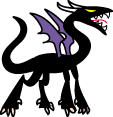-
2021-12-14, 11:51 PM (ISO 8601)
-
Top
-
End
-
#16
Bugbear in the Playground
 Re: Kalsema: The Lands of the Long Light (Isekai Homebrew Setting)
Re: Kalsema: The Lands of the Long Light (Isekai Homebrew Setting)
The Glorious and Resplendent Trade Federation of Tshralon which is Graced by the Inestimable Light of the Three Sovereigns of the Great and Noblest Gambit
The peninsular lands of southern Chamadron from which the strangely-named 'Republic of Tshralon' has recently emerged were, for a long age, occupied by independent city states. The name of the new nation, or its shortened name, is quite at odds with its actual form of government, as well as that suggested by its full, internal title -- The Glorious and Resplendent Trade Federation of Tshralon which is Graced by the Inestimable Light of the Three Sovereigns of the Great and Noblest Gambit. The latter also has little to do with the actual rule of the realm. This reality becomes clear when the recent history of the region is examined in any detail. Until recently, the Peninsula of Cashael -- or Kash'aye'aelle, was a riverine, swamp-bound extension of southern Chamadron. Its civilization was divided between a number of city-states founded by refugees from the savage incursions of the nomadic Karthargian, Vann-Dlial, and Mongg nations, who arose in the central plains some time after the end of the Empire of the Dreaming of the Dragons. The refugees from the border cities of Iskatlian, Takriss, Aumandar, and others whose names are lost, established their cities on the literal decks of the great carracks with which they fled up down the treacherous Rapids of Asumandrion the Swift. The greatest of these settlements was the city-state of Cashael. The typhonic elves of the old Empire of the Wyrm's Dreaming allied themselves with the various races of marsh dwellers -- diverse tribes of lizard folk and grippli, as well as marsh-dwelling nations of halflings. Cashael and its sister 'cities of refuge' eventually established profitable trading enterprises with the peoples of the Asandarian Isles which lie in the Sea of Salcarist between Chamadron and the northern coast of the desert continent of Bhaul-Zhagor, as well as the druidic enclaves of Rast Vadame and the various Successor States established further to the west. In Cashael, three deities native to the region, venerated primarily by the lizardfolk, were paramount -- Khazz-Samar, Lord of Luck, a patron of trade usually depicted in the form of a river otter, Assadar the Lord of Love, an amorous power who most often took the form of a hare, and Shabur Beck, the Minister of the Knife, a reptilian deity of assassins. These three were collectively as the Triumvirate or the Lords of the Three -- and governors respectively of the mercantile, personal, and martial spheres of endeavor. The Triumvirate were venerated in a network of shrines along the peninsula, and their faith was marked by regular festivals. However, the Faith of the Three was little known outside of the swampy peninsula, and none considered it an enterprising or missionary conviction. It had no one canonical scripture, and little theology. This religion experienced a remarkable transformation which dramatically changed the political circumstances of the city-states upon the emergence of an inspired evangelistic known as Prust Satalnis. This raving member of the platypus-like kljunari species, an ancient but otherwise hardly noteworthy population within the Peninsula of Cashael, produced thousands of reams of highly-complex theological exposition that completely recast the nature of what he called the Great Three or the Dark Three. He presented each member of the divine triad in a new form -- Khazz-Samar in the form of a platypus, Asadar in the form of a flying squirrel, and Shabur Beck in the form of a axolotl, narrated a complicated myth whereby the three had planned a 'Great Gambit' for eons, and were only now prepared to enact this most ingenious of stratagems. The result, so claimed the self-ordained Voice of the Three Divines, would be no less than the dominion of all mortal lands.


 Re: Kalsema: The Lands of the Long Light (Isekai Homebrew Setting)
Re: Kalsema: The Lands of the Long Light (Isekai Homebrew Setting)


 Reply With Quote
Reply With Quote